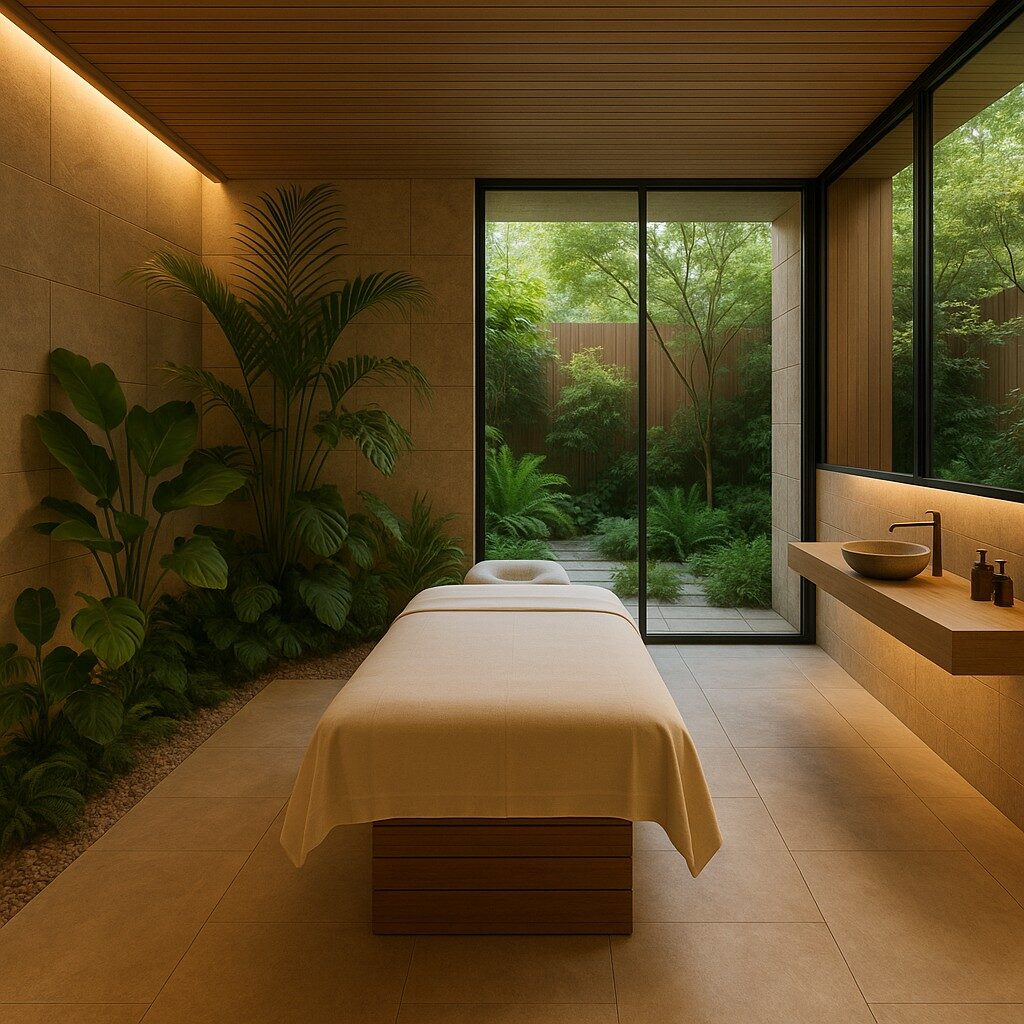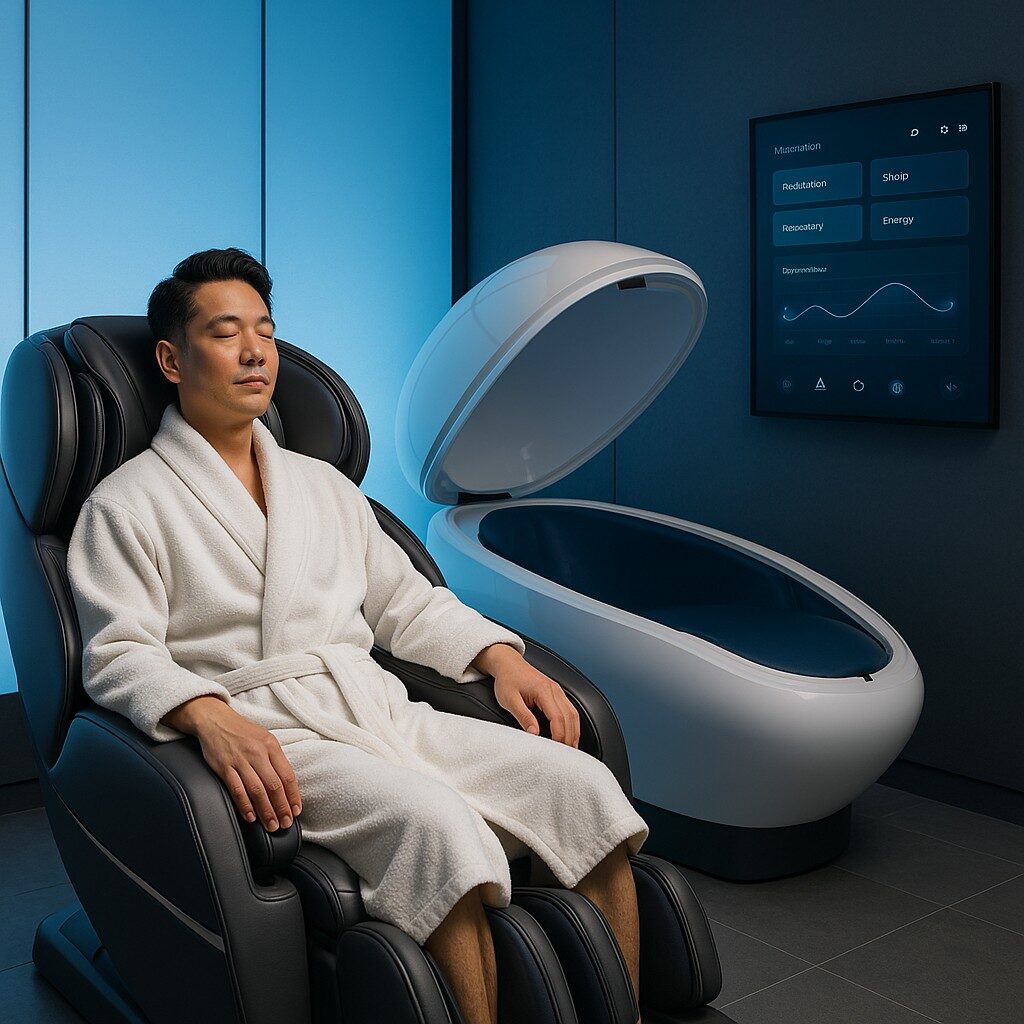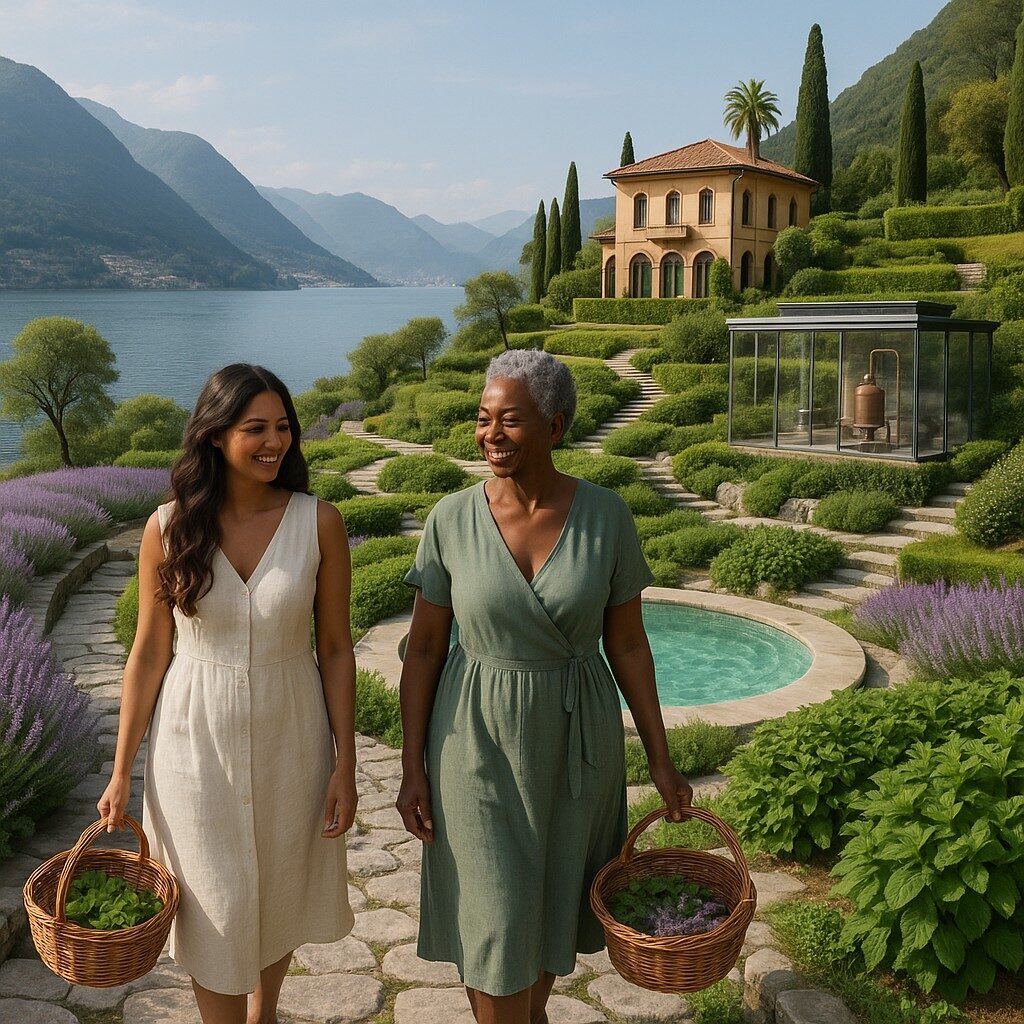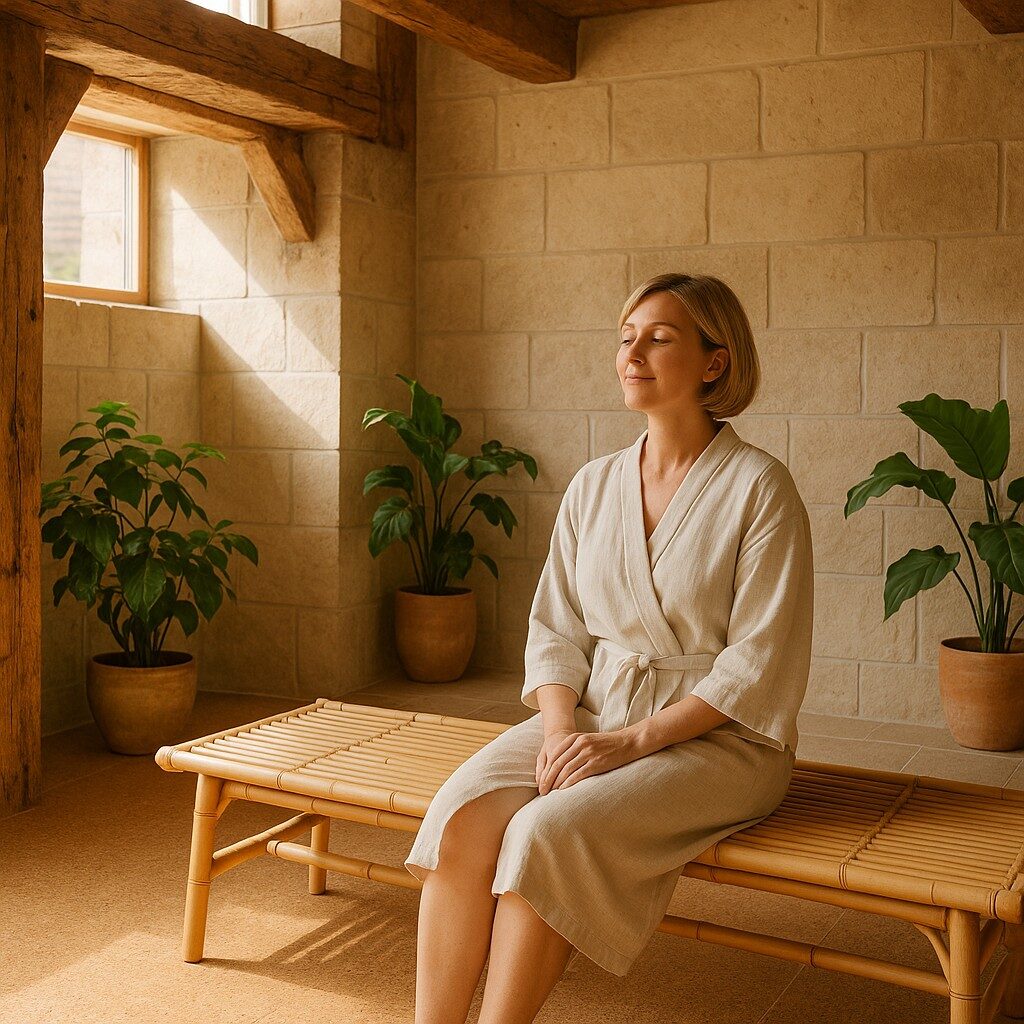Discover which exclusive spa trends are quietly transforming high-end home wellness in 2024 and beyond. From AI-personalized therapies and immersive nature experiences to sustainable, touchless technologies, the modern luxury residence wellness space is a sanctuary of innovation, relaxation, and health. By understanding the latest industry breakthroughs, you’ll see how homeowners and designers are redefining residential wellness — far beyond classic steam and sauna facilities.
Beyond the basics: what makes a home spa "hidden" and trendsetting?
Today’s elite private wellness spaces are no longer just about having a hot tub or steam room tucked away in the basement. The concept of “hidden” encompasses both exclusivity and cutting-edge approaches not yet widely adopted in the mainstream market.
“The difference between standard amenities and truly innovative private wellness sanctuaries lies in personalization and integration with daily life,” explains Marisa Garland, luxury wellness architect and spa consultant. “We’re seeing clients request features previously only found in the most exclusive destination retreats.”
These forward-thinking spaces incorporate biophilic elements that connect with nature, technology that responds to individual biometrics, and design that transcends the traditional clinical aesthetic of spas.

The emphasis has shifted from mere relaxation to comprehensive wellness that adapts to the resident’s changing needs.
Distinguished private wellness spaces now feature:
- integrated health diagnostic tools that inform personalized treatments
- architectural elements that transform to accommodate different modalities
- sophisticated biohacking equipment previously unavailable for residential use
- spaces that blend seamlessly with the home’s overall design language
- wellness concepts that connect to cultural traditions and healing practices
This evolution represents a fundamental rethinking of how wellness integrates with luxury living—creating spaces that nurture both body and spirit through thoughtful design and innovative technologies.
Smart spa technology: from biometric personalization to touchless therapies
Advanced technology is revolutionizing the private wellness experience, bringing hospital-grade treatments and resort-exclusive therapies directly into residential settings.
Biometric personalization stands at the forefront of this revolution. High-end homes now incorporate systems that analyze individual health markers—from heart rate variability to skin conductivity—to create custom wellness programs. These sophisticated platforms adjust lighting, temperature, aromatherapy diffusion, and even treatment parameters based on real-time physiological feedback.
“We’re installing sensors that detect stress levels through perspiration and pulse readings, then automatically adjust the environment to counteract those stress indicators,” notes Rafael Lomas, residential wellness technology specialist. “The system might increase negative ion production, shift the chromotherapy lighting to calming blue tones, or activate acoustic dampening when it detects elevated stress markers.”
Touchless therapy options have gained tremendous popularity, offering hygiene benefits alongside convenience. These include:
zero-gravity dry float therapy pods that simulate weightlessness without water contact
infrared technology that delivers deep muscular healing without physical touch
sound therapy chambers with precision-calibrated acoustic architecture
light-based treatment rooms featuring programmable chromotherapy and photobiomodulation
meditation pods with neurofeedback capabilities that guide mental states
Perhaps most impressive are the AI-driven massage systems that have progressed far beyond simple mechanical chairs. The latest models use thermal imaging and pressure mapping to identify tension patterns unique to each user, then deliver customized treatments with robotic precision that rivals human therapists.

These systems remember individual preferences and adapt over time, creating truly personalized experiences.
Cryotherapy and contrast therapy have also entered the residential realm, with compact units that deliver controlled cold exposure without the industrial equipment previously required. Some residence sanctuaries feature dedicated recovery rooms with compression therapy systems, percussive treatment stations, and even hyperbaric oxygen chambers—technologies once found only in professional sports facilities and specialized clinics.
Nature immersion and biophilic spa architectures
The integration of natural elements with wellness spaces creates powerful healing environments that engage all senses while strengthening our innate connection to the natural world.
Luxury residential designers are incorporating dramatic biophilic elements that blur the boundaries between indoors and outdoors. Glass-walled treatment rooms that pivot open to private gardens, retractable roofs above hydrotherapy pools, and living green walls that purify air while adding visual serenity have become signature features in forward-thinking homes.
“We’re designing spa spaces that change with the seasons and time of day,” explains botanical wellness architect Camilla Fernandez. “When you experience a massage as morning light filters through cherry blossoms or take a steam while watching snow fall, it creates an unreplicable moment of presence and connection.”
Sophisticated climate control systems make these indoor-outdoor transitions seamless, allowing for comfortable year-round use in various weather conditions. Some properties feature heated stone pathways leading to outdoor meditation pavilions, while others incorporate ancient principles like feng shui and vastu shastra to optimize energy flow between wellness spaces and natural surroundings.
Materials selection has evolved beyond mere aesthetics to incorporate textures and elements with therapeutic properties:
- hand-hewn cedar and hinoki for their aromatic benefits and antimicrobial properties
- himalayan salt incorporated into walls for air purification
- stone selected from specific quarries for their mineral composition and energy properties
- living mycology installations that filter air while connecting to forest biomes
- water features engineered to produce specific frequencies of sound for acoustic healing
Custom spa gardens: from herbal apothecary to outdoor hydrotherapy pool
The concept of healing gardens has evolved far beyond decorative plantings into functional wellness spaces. Dedicated herb gardens supply fresh botanicals for customized treatments, with climate-controlled indoor growing areas ensuring year-round availability of medicinal plants.
One Lake Como-inspired residence in California features a tiered garden with different microclimates supporting various therapeutic plants—from lavender terraces for relaxation to peppermint groves for invigoration. An adjacent blending room contains distillation equipment for creating personalized essential oils and hydrosols from garden harvests.

Outdoor hydrotherapy has also received sophisticated treatment, with carefully sequenced water experiences inspired by global traditions. A Colorado mountain retreat incorporates a Japanese onsen, Nordic cold plunge, and heated stone platforms within a secluded aspen grove—all engineered to function through winter with minimal environmental impact.
“The true luxury is creating a treatment journey that follows the landscape,” notes hydrotherapy designer Marcus Elliot. “We’re designing water circuits that guide people along natural contours, revealing different views and sensory experiences at each station.”
Specialty features like natural clay mud treatment areas, outdoor sound therapy platforms positioned at acoustic sweet spots on the property, and botanical steam pavilions that harvest rainwater demonstrate how thoroughly the natural environment can be integrated into the wellness experience.
Sustainability and eco-conscious luxury spa design
Environmental responsibility has become inseparable from true luxury, with the most forward-thinking residence wellness spaces leading in sustainable innovation.
Water conservation technologies have advanced significantly, allowing for guilt-free indulgence. Closed-loop water systems recapture, filter, and repurpose water from hydrotherapy features, while intelligent monitoring prevents waste without compromising the experience. Some systems harvest and purify rainwater specifically for spa use, creating true self-sufficiency.
Energy management has received similar attention, with passive solar design principles informing the orientation of spa spaces and thermal mass materials storing heat naturally. Advanced heat recovery systems capture energy from drainage water and ventilation exhaust, while solar thermal collectors provide renewable heating for pools and hot water systems.
Material selection now prioritizes both luxury and responsibility:

- reclaimed wood from historic structures repurposed for sauna construction
- locally quarried stone reducing transportation emissions
- rapidly renewable materials like bamboo and cork for flooring and furnishings
- zero-VOC finishes and natural plasters maintaining healthy air quality
- recycled glass and plastic incorporated into decorative elements and surfacing
Treatment protocols have similarly evolved to minimize environmental impact. Waterless spa treatments—utilizing heated stones, herbal compresses, and dry massage techniques—deliver therapeutic benefits while conserving resources. Plant-based product lines formulated with organic, locally sourced ingredients have replaced chemical-intensive options.
Energy-intensive equipment like saunas and steam rooms now incorporate smart scheduling systems that optimize heating cycles based on usage patterns, significantly reducing power consumption without compromising availability. Motion sensors and automated controls ensure systems operate only when needed.
“True luxury is sustainability that remains invisible to the user,” explains sustainable spa consultant Elena Markov. “Our clients want the most beautiful, effective wellness experiences possible, delivered with minimal environmental footprint. That balance requires sophisticated engineering hidden behind seamless design.”
Hyper-personalized and holistic wellness: programs, treatments, and integration
The most innovative residential sanctuaries now offer comprehensive wellness programming previously available only at exclusive destination retreats.
These spaces transcend physical facilities to include personalized protocols developed through advanced health assessments. Some luxury homes feature dedicated diagnostic suites where residents undergo comprehensive testing—from metabolic analysis to genetic screening—with results informing custom wellness prescriptions that evolve over time.
Integration between spaces allows for complete wellness journeys within the home. A typical sequence might begin with meditation in a dedicated mindfulness studio, followed by contrast hydrotherapy, targeted bodywork in a treatment room, and concluding with nutrition therapy in a wellness kitchen—all designed to work synergistically.
Staffing models have also evolved, with some residences employing:
- wellness concierges who coordinate practitioners and treatments
- rotating specialists in various modalities who visit regularly
- virtual practitioners who connect through sophisticated telehealth setups
- technical specialists who maintain and calibrate advanced wellness equipment
- botanists who manage therapeutic gardens and custom formulations
Digital integration has streamlined the management of these complex wellness ecosystems. Custom applications allow residents to schedule treatments, adjust environmental settings, review health data, and receive personalized recommendations—all while maintaining the serene atmosphere essential to true relaxation.
“We’re designing spaces that accommodate multiple healing traditions and can adapt as wellness science evolves,” notes integrative wellness architect Sophia Chen. “A room might serve as a meditation space in the morning, transitioning to acupuncture in the afternoon, and sound therapy in the evening—all with minimal reconfiguration.”
At-home holistic retreats: digital detox and wellness journeys
The concept of the wellness retreat has been reimagined for the home environment, with spaces designed for immersive health experiences that span days or weeks without leaving the property.
Digital detox architecture incorporates strategic technology-free zones where electromagnetic frequencies are minimized and connections to nature are maximized. These spaces often feature specialized lighting systems that sync with circadian rhythms, materials chosen for their grounding properties, and acoustic design that creates profound silence—increasingly rare in our connected world.
One Beverly Hills property includes a dedicated wellness wing inspired by Ayurvedic principles, with different treatment spaces corresponding to doshas and time-specific routines programmed throughout the day. The owner hosts seasonal panchakarma retreats guided by visiting specialists, accommodating guests in purpose-built quarters adjacent to treatment areas.
A mountain estate in Colorado features a comprehensive “spa safari” experience where participants move through a sequence of indoor and outdoor wellness stations across the property—each offering different therapeutic modalities connected by mindful walking paths designed for contemplation between treatments.
“The home retreat concept is about creating a container for transformation,” explains wellness program designer Marcus Wei. “We’re designing spaces and experiences that support profound personal work—whether that’s recovery from burnout, life transitions, or simply deepening one’s wellness practice.”
Social wellness, community, and spa for connectione
While privacy remains essential in residential wellness design, forward-thinking homes now include spaces specifically created for shared healing experiences that strengthen relationships and community bonds.
Multi-generational wellness has influenced spatial planning, with treatment areas and thermal experiences designed to accommodate family members of different ages and abilities. Child-friendly hydrotherapy features, teen-focused wellness education spaces, and accessible design for aging parents ensure everyone can participate appropriately.
Group experiences have gained prominence in residential wellness programming:
- sound bathing chambers acoustically designed for small gatherings
- meditation studios that accommodate guided group practice
- thermal suites with conversation areas integrated into cooling zones
- treatment rooms configured for couples or small groups
- wellness kitchens designed for interactive nutrition education
Some residences feature dedicated wellness salons—spaces designed for intimate gatherings centered around health and wellbeing. These multi-functional rooms might host visiting practitioners offering workshops, wellness-focused dinner parties with functional foods, or regular group practices like yoga or tai chi.
“The social aspect of wellness has been overlooked in residential design,” notes wellness architect Thomas Ayres. “We’re creating spaces that support connection as an essential component of healing—whether that’s between partners, family members, or close friends.”
Technology supports these social wellness experiences through systems that coordinate group activities, synchronize environmental settings for shared experiences, and even connect remote participants through immersive teleconferencing designed specifically for wellness applications.
The most innovative designs balance private and social wellness spaces, recognizing that true healing often moves fluidly between solitary reflection and meaningful connection. Transitional zones allow participants to modulate their level of interaction, ensuring comfort for different personality types and varying needs for solitude and community.
Conclusion
The evolution of residential wellness spaces reflects a profound shift in how we understand luxury—from material ostentation to deeply personalized experiences that enhance health, connection, and quality of life. These hidden spa trends represent more than amenities; they embody a holistic approach to wellbeing that integrates cutting-edge technology, environmental responsibility, and timeless healing traditions.
As these innovations continue to mature, we can expect even greater integration between wellness spaces and overall home design, with boundaries between dedicated spa areas and living spaces becoming increasingly fluid. The future residence will likely function as a comprehensive wellness ecosystem, continuously adapting to support optimal health through every season of life.
By embracing these forward-thinking approaches to home wellness design, homeowners create sanctuaries that nurture body and spirit while expressing personal values around sustainability, community, and holistic health. The truly hidden aspect of these trends isn’t their exclusivity, but rather their profound ability to transform daily life through thoughtful integration of wellness into the home environment.
Frequently asked questions (FAQ)
What spa trends are luxury homeowners using in 2024/2025 that aren't found in hotels?
Luxury homes are integrating biometric spa tech, bespoke nature immersion (like forest bathing suites), sustainable hydrotherapy, and hyper-personalized wellness programs unique to private properties.
How can I bring resort-level spa innovation into my home?
Partner with a spa designer or wellness architect experienced in private residences, and research trusted suppliers of at-home spa technology, biophilic design, and holistic programs.
Are smart spa features safe and easy to manage at home?
Yes, when installed by reputable professionals and paired with proper oversight or app-based controls, smart spa tech enhances safety, hygiene, and user experience.
What's the biggest luxury home spa mistake to avoid?
Failing to focus on true personalization and ongoing support—choose systems that adapt over time and are flexible for your health and self-care needs.
How do I ensure my home spa is both luxurious and sustainable?
Choose water- and energy-efficient technology, certified green materials, plant-based products, and brands with transparent eco-credentials. Consult a specialist for a custom sustainability plan.



